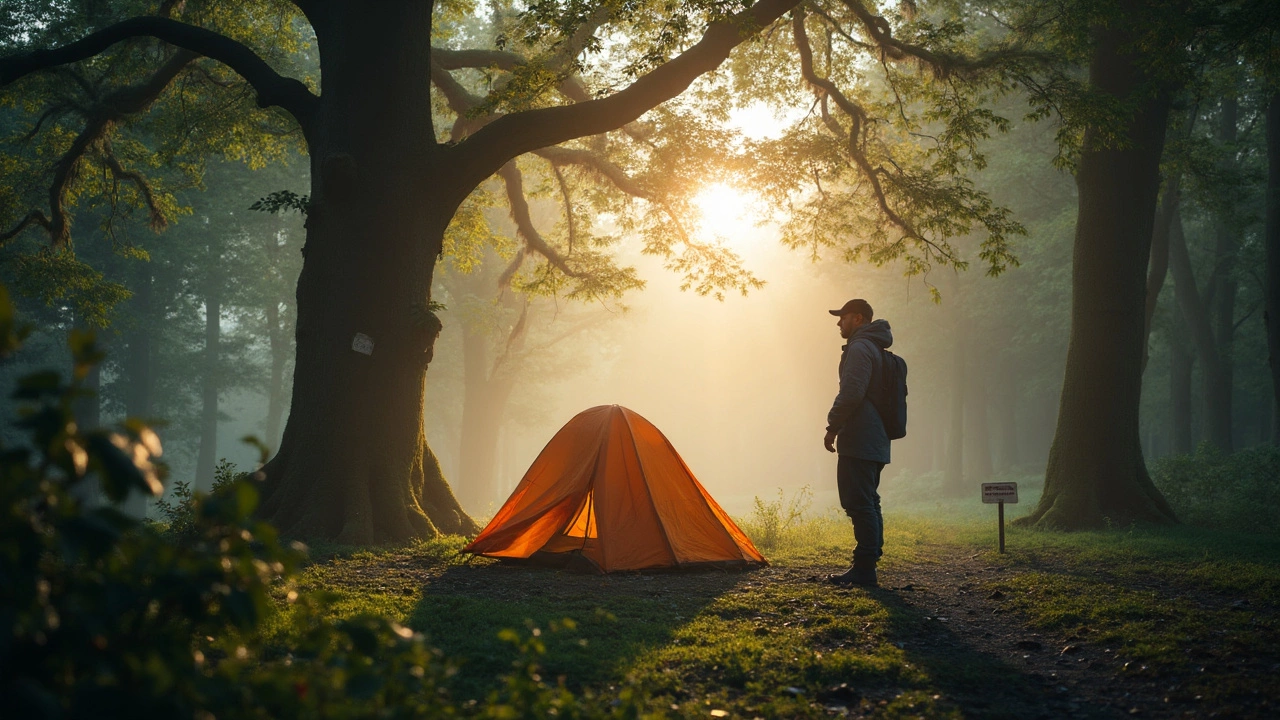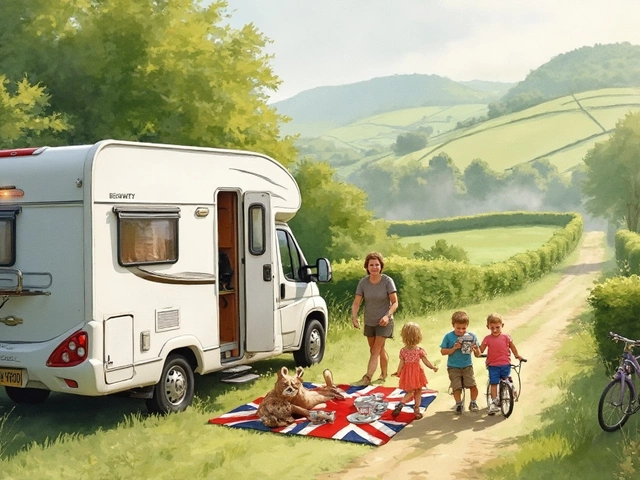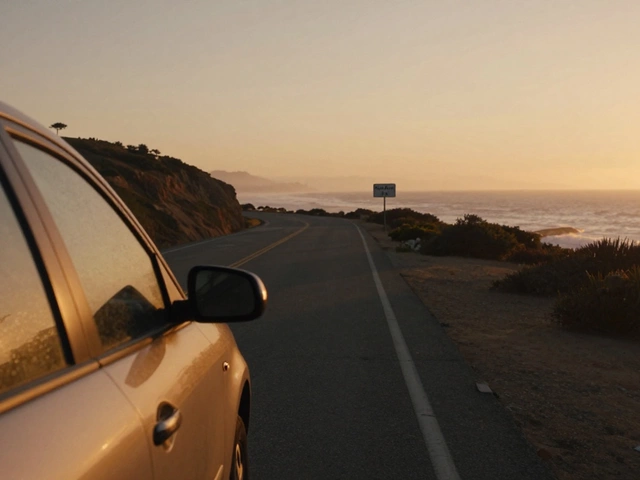Wild camping in the UK feels like the ultimate escape—nobody around, just you and the trees. But here’s the catch: it’s not as clear-cut as tossing up a tent anywhere you fancy. In most parts of the UK, wild camping is technically not allowed unless you’ve got permission from the landowner. If you decide to go for it without asking, you’re actually trespassing, which means you could get told to move on or face a fine.
Now, before you go packing your bag, it’s worth knowing exactly what’s allowed, what’s risky, and how you can stay out of trouble. Rules are different in Scotland compared to England, Wales, or Northern Ireland, so where you camp really matters. And don’t forget about local exceptions—some spots make wild camping easier, while others definitely don’t.
This article lays out the real details on wild camping in UK woods: the legal ins and outs, places with more freedom, and the best ways to camp without causing a scene (or trashing the place). You’ll pick up tips for being low-key and respectful, so you can enjoy the wild—without accidentally breaking the law.
- The Law: What You Need to Know
- Where Is Wild Camping Allowed?
- Getting Permission and Staying Respectful
- What to Pack and Common Mistakes
- Pro Tips for a Safe and Low-Impact Trip
The Law: What You Need to Know
Alright, here's what most people get wrong about wild camping in the UK: it's mostly not allowed by default. The main rule is simple—unless you’ve got the landowner’s permission, camping on most private or public land is basically trespassing. The UK doesn’t have a “right to roam” for wild camping the way some other places do, except for one big exception—Scotland.
Scotland’s Land Reform (Scotland) Act 2003 is a game-changer. It lets people camp almost anywhere on unenclosed land, as long as you follow the Scottish Outdoor Access Code and camp responsibly. In England, Wales, and Northern Ireland, though, you need permission almost everywhere you go, apart from a couple of special spots like parts of Dartmoor (though even here, rules have gotten tighter recently).
To make it even clearer, check out this comparison of the main areas people ask about:
| Country/Area | Wild Camping Legal? | Notes |
|---|---|---|
| Scotland | Yes (with conditions) | Allowed on most unenclosed land. Follow Outdoor Access Code. |
| England | No (except with permission) | Mostly private land. Small areas of Dartmoor permit it, but with rules. |
| Wales | No (except with permission) | All wild camping needs landowner consent. |
| Northern Ireland | No (except with permission) | Strict on private land, very few exceptions. |
The rules aren’t there just to spoil your fun—it’s about protecting nature and respecting landowners. If you camp somewhere you shouldn’t, you won’t get arrested, but you could be asked to leave on the spot by a park ranger or the landowner. If you refuse, you could be fined or, in rare cases, face a civil claim.
Here’s how to keep things simple when you’re out there trying to enjoy some wild camping UK style:
- If you’re in Scotland, stick to the access code—camp away from buildings, don’t stay too long, and leave no trace.
- Anywhere else in the UK, always get permission. No one wants to wake up to an angry farmer or ranger.
- Stick to known “tolerant” zones, like certain patches of Dartmoor (double-check current rules), and double-check any bylaws before pitching up.
Don’t skip this stuff—knowing the law keeps your adventure stress-free and helps everyone who wants to enjoy the outdoors.
Where Is Wild Camping Allowed?
So, can you really drop your tent anywhere in the UK? Not quite. Here’s how the rules play out depending on where you want to go.
wild camping UK rules are probably the most relaxed in Scotland. Thanks to the Land Reform (Scotland) Act 2003, you can camp on most unenclosed land across Scotland’s countryside, including many forested areas. There are a few spots, especially around Loch Lomond and The Trossachs National Park, that have extra restrictions or require permits during busy months. Always check for local signs or rules before settling in.
England, Wales, and Northern Ireland are a whole other story. Wild camping here is only legal if you have permission from the landowner. Dartmoor National Park used to be different, letting wild campers pitch up freely, but a 2023 legal case shook things up. Now, you need to use the park’s camping map and stick to specific spots where it's still allowed. Everywhere else, including the vast majority of woods and forests, you technically need to ask first—even though a lot of people quietly get away with it, especially if they camp late and leave early.
The big forests in England, like New Forest and parts of the Lake District, have clear no-camping policies. Some managed woodlands, such as those owned by Forestry England, sometimes run special wild camping experiences or events, but they don’t allow it as a free-for-all.
Here’s a quick look at how things stack up:
| Region | Legal Without Permission? | Any Special Rules? |
|---|---|---|
| Scotland | Yes (mostly) | Some areas require a permit (Loch Lomond & Trossachs NP) |
| England | No | Dartmoor: Some spots allowed, check camping map |
| Wales | No | Permission needed everywhere |
| Northern Ireland | No | Very strict—mostly off-limits outside official sites |
If you want to camp in a woodland and stay on the right side of the law, look for official wild camping sites or places where you can get written permission. A few apps and websites link campers with landowners open to visitors. Just don’t assume that every pretty bit of woods is fair game—checking first saves you a ton of hassle.
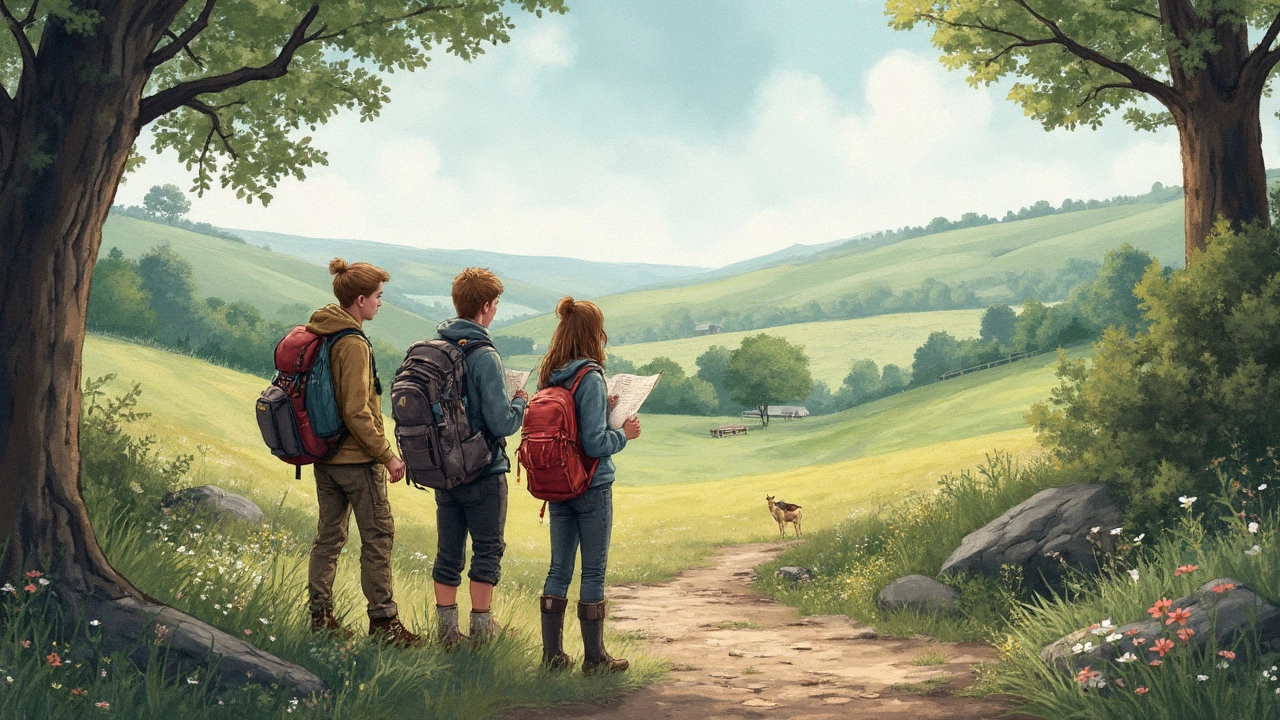
Getting Permission and Staying Respectful
So, you want to go wild camping in the UK woods? Here’s the reality: in most of England, Wales, and Northern Ireland, all land is owned by someone. If you want to set up camp legally, you need to get permission from whoever owns the spot you’ve got your eye on. That could be the local council, a private landowner, or sometimes a company. And yep, tracking down the right person can be a hassle, but it’s the best way to avoid an awkward chat in the middle of the night or a fine for trespassing.
One study by the Camping and Caravanning Club found that about 62% of wild campers in England said they’d managed to get permission just by asking nicely. Most landowners are cool with one-night stays if you keep numbers small and don’t leave a mess. Big groups or long stays? That’s almost always a no-go.
| Region | Legal Wild Camping? | Permission Needed? |
|---|---|---|
| Scotland | Yes, most areas | Not usually (thanks to the Land Reform Act) |
| England | No (except Dartmoor, and even that changed in 2023) | Yes |
| Wales | No | Yes |
| Northern Ireland | No | Yes |
When you find the right person, just explain what you’re up to—usually something like: “I’m hoping to camp for just one quiet night, leave no trace, and respect the place.” If they say no, move on. There are way more woods than you think.
If you do get the thumbs up, keeping your wild camping low-impact is crucial. Here are the basics for staying respectful:
- Choose a spot away from footpaths and homes—out of sight, out of mind.
- Only stay one night; pack up early in the morning.
- Don’t light fires. Use a gas stove if you really need to cook.
- Take every bit of rubbish with you – even stuff you didn’t bring.
- Keep noise down: you’re not there for a party.
- Never dig up or damage plants, and avoid disturbing wildlife.
Word gets around fast—if you treat a place well, landowners might let other campers back in the future. Mess it up, and you’ll just ruin it for everyone else. It’s all about keeping that wild camping UK experience open for as many people as possible.
What to Pack and Common Mistakes
Head out for a night of wild camping in the UK and you've got to be smart about what you carry. The right gear can make the difference between a night to remember and a soggy disaster. Lightweight is the name of the game—you don’t want to be hauling a tough-guy rucksack up muddy hills, only to regret it two hours in.
- Wild camping UK really calls for a tent that blends in and pitches fast. Go small, choose muted colours—it helps you stay low-key and rapid if you need to move.
- A sleeping bag good for the season is key. British woods get colder at night than most people think. A mat goes a long way for comfort and insulation.
- Don’t bank on campfires—most woods ban them, and you’ll get in real trouble if you leave scorch marks. Pack a portable camping stove if you want hot food or drinks.
- Water isn’t always close at hand. A filter or purification tablets beat chancing it with dodgy streams. Grab enough snacks, too—it’s harder to cook out there than you might expect.
- Headtorch, knife, first aid kit, and a map or offline GPS should always make the cut. Phone signal can vanish the moment you step under a thick canopy.
| Item | Recommended Weight | Essential? |
|---|---|---|
| Tent (1-2 person) | 1.5–2kg | Yes |
| Lightweight sleeping bag | 1–1.2kg | Yes |
| Insulated mat | 0.5–0.7kg | Yes |
| Stove + fuel | 0.5kg | Optional |
| 1L water bottle | 1kg (filled) | Yes |
Here are mistakes people make, even if they’ve camped before:
- Ignoring the weather forecast—if it chucks it down, you want your tent up before things get messy.
- Setting up in obvious spots like footpaths or open glades. It’s just asking to be asked to move on.
- Packing too much. You’re out for one or two nights, not a week in the wild. The heavy backpack regret is real.
- Forgetting to pack out all their rubbish. Leaving food scraps or litter is the fastest way to get wild camping banned everywhere.
- Skipping a first aid kit—always seems dumb until the moment you need it.
The goal is to move through the woods, leave no trace, and get some proper sleep without making things harder than they have to be. Stick to the essentials and keep it light—you’ll thank yourself later.
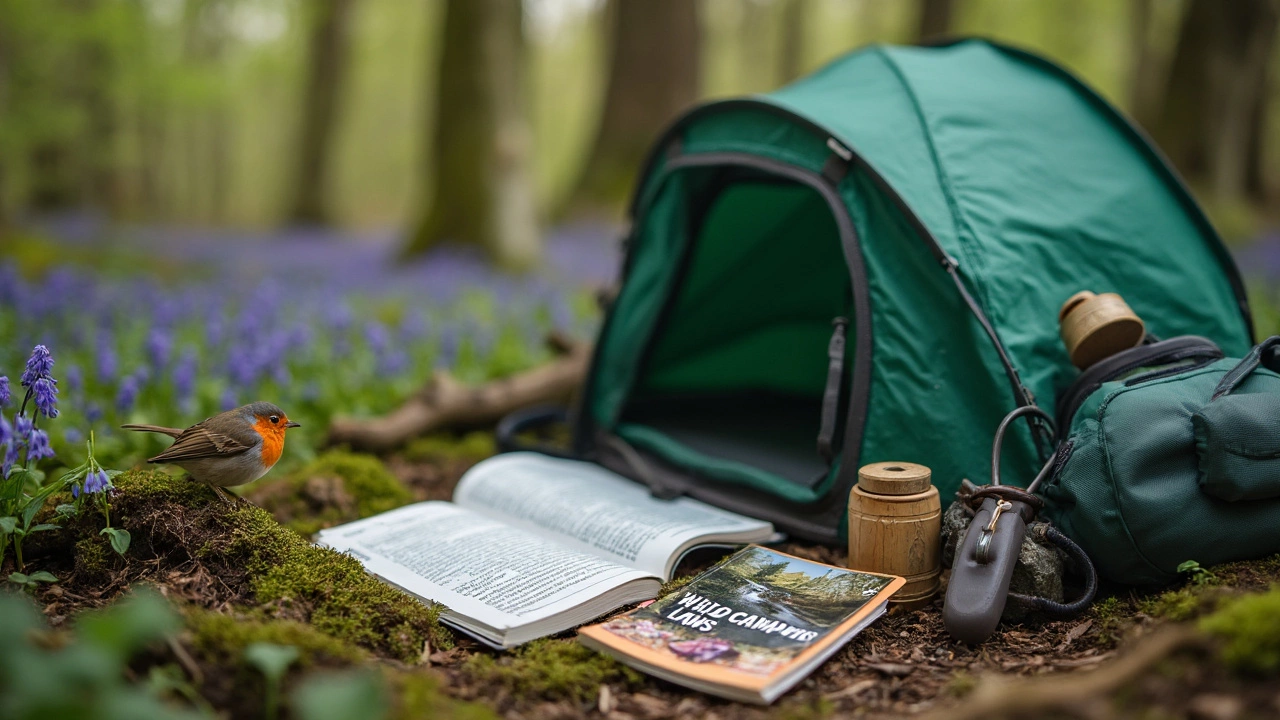
Pro Tips for a Safe and Low-Impact Trip
If you want your wild camping trip to go smoothly, a few simple habits make all the difference. The main idea? Leave no trace behind, and keep yourself safe. You’re not just a guest in the woods—you’re easily noticed if you take shortcuts.
- Pack out all your rubbish. Even tiny bits like tea bags or orange peels will stick around longer than you think. Wildlife can get into them, and future campers will see the mess.
- Stick to a small campsite—don’t flatten big patches of plants or disturb the ground more than you need to. Use a tent that blends in, and set up late in the day so you’re less likely to be noticed, heading out early the next morning.
- Use a portable stove instead of open fires. In England and Wales, you usually aren’t allowed open fires in the woods because of the risk. A mini gas stove is safer and leaves no marks.
- Keep noise—and music—down. Others might be nearby, and wildlife doesn’t love a party in their backyard.
- If you need the toilet, dig a small hole, at least 15cm deep and far from water. Bring extra tissue, but pack it out. Lots of campsites have a surprising amount of toilet paper left behind, and it’s gross.
Before heading out, double-check the forecast. Even a calm summer night can turn into a wet one, and UK weather loves to surprise you. Carry a charged phone, a map, and tell someone where you’re going. Even veteran campers can get lost once the sun sets.
If you spot signs warning against wild camping UK or fires, respect them—they’re usually there for the landowner's reasons, like rare wildlife or fire risk. Treat every spot like you’d want your favourite park treated: keep it clean and basically invisible that you were ever there. That’s how wild camping stays possible for everyone.
